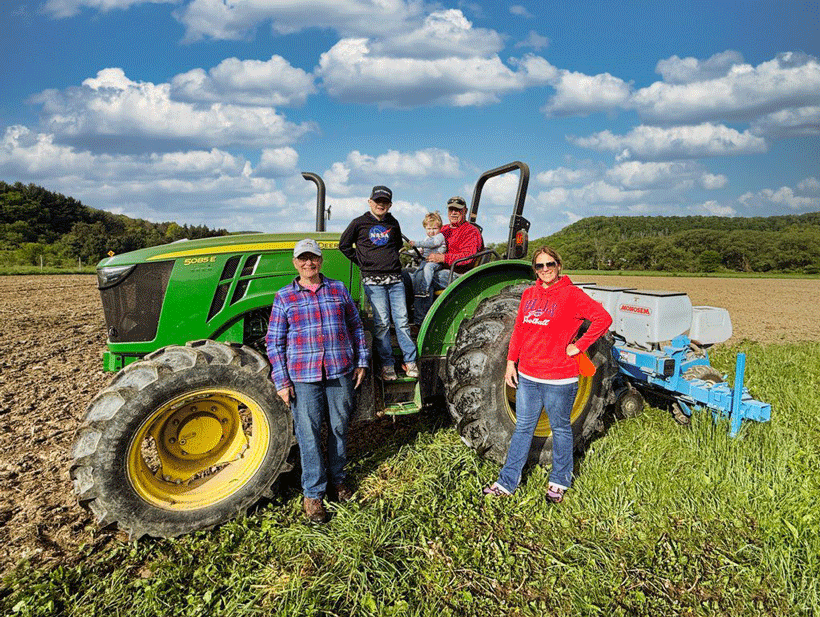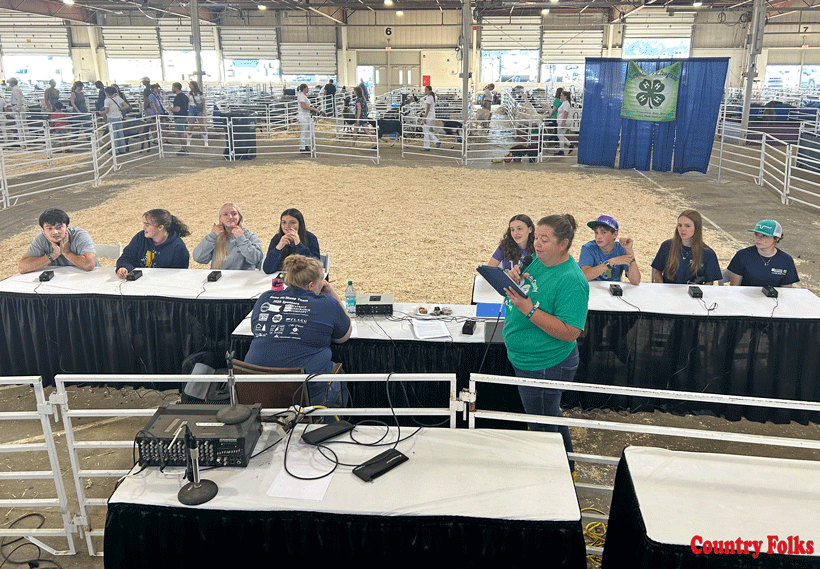
On Sept. 8, much of Central New York received light frosts. Fearing that such might take place, I had covered my frost-sensitive crops with tarps. Doing so proved to be a wise idea, since, come dawn, the hood of our car showed a very thin layer of ice crystals. When those melted away, I removed the tarps. The tomatoes, peppers and eggplants appeared to thank me, as it was quite evident that they had survived to enjoy some Indian Summer.
Wikipedia defines “Indian summer” as “a period of unseasonably warm, dry weather that sometimes occurs in autumn in temperate regions of the northern hemisphere. Several references describe a true Indian summer as not occurring until after the first frost, or more specifically the first killing frost.”
Weather historian William Deedler wrote that Indian summer can be defined as “any spell of warm, quiet, hazy weather that may occur in October or November,” though he noted that he was “surprised to read that Indian summers have been given credit for warm spells as late as December and January.” He also noted that some writers use Indian summer in reference to the weather in only New England, “while others have stated it happens over most of the United States, even along the Pacific coast.”
Quoting Wikipedia again, “Although the exact origins of the term are uncertain, it was perhaps so-called because it was first noted in regions inhabited by Native Americans, or because the natives first described it to Europeans, or it had been based on the warm and hazy conditions in autumn when Native Americans hunted.”
Examining this term a little more scientifically, we find that most climatologists agree that an Indian summer is typically caused by a sharp shift in the jet stream from the south to the north. The warm weather may last from a few days to over a week, and may happen several times before winter really settles in.
Indian summer is a good time to feed living crops – not bare corn stubble – soluble nutrients, particularly winter forages. Winter forages include wheat, rye, triticale, speltz and barley. Soluble nutrients that can be fed to these species include urea (hopefully in protected form), mono-ammonium phosphate, diammonium phosphate and injected liquid manure slurry. These will be taken up and metabolized promptly by these winter forages.
New York field research has found that up to 60 lbs. of nitrogen (N) per acre increased spring yields of autumn-planted triticale by 43% on fields without prior spring/summer manure applications. Early plantings and autumn N applications significantly increased the number of tillers, which in turn set the spring yield potential. Even with autumn N applications, most agronomists recommend including sulfur (S), with a 10:1 ratio of N:S. Sulfur is effectively the cornerstone of the essential amino acid methionine; one way or another, methionine must be fed to all animals, because they can’t synthesize it themselves. Bear in mind also that rye plants, the tallest of the winter forage species, tend to be more prone to lodging with N rates exceeding 50 lbs./acre in autumn.
Nutrients that can be applied to soils – with or without winter forages – include mined and/or unrefined amendments like ground limestones, rock phosphates, bone meal and some forms of potash. These items are feeding the soil rather than feeding the growing plants directly. These also greatly benefit from the freezing/thawing action of northern soils during winter. Such freezing/thawing seesaw behavior serves to make otherwise bound-up nutrients become more available to crops come spring. This benefit of enhanced soil nutrient availability shows that money spent this autumn on these inputs shows a handsome return on investment at harvest time next growing season.
This freezing/thawing action has been shown to increase the effective neutralizing value (ENV) of ground limestone. Quoting a bulletin from the Minnesota Department of Agriculture: “ENV is the fraction of the material’s CCE (calcium carbonate equivalent) that will react with soil acidity in the first year of application. The ENV is calculated by multiplying a liming material’s CCE and its fineness. The CCE analysis consists of determining the combined total of calcium/magnesium carbonate and oxide contained in an ag-lime. CCE is expressed as a percentage of 100% pure calcium carbonate. Pure calcium carbonate is the standard by which all ag-lime chemical purity is compared.”
If we can accept that an assist from Jack Frost helps increase the ENV of a liming material, this would mean that – in terms of supporting next year’s crops – we can likely get away with applying less lime this autumn than would be required with a spring 2026 application.
Another plus would be that, as I write, field conditions in the Northeast are generally pretty passable – a small benefit of partial drought conditions in many locations. I’ve taken many soil samples in late summer and early autumn in Central New York. Who knows what field conditions will be next spring? If next spring is super soggy like spring 2025 was, growers who take advantage of Indian summer now, to do the necessary soil probing, will be glad that they did come next April.
We’re certain that liming materials improve the utilization of fertilizer ingredients, particularly phosphorus and N. Now combine that certainty with the uncertainty of global fertilizer ingredient price volatility. Not soil testing to determine whether or not lime is needed is a bad idea. Be sure to use a lab that gives base saturation percentages (BSP). A BSP for magnesium of less than 10% will indicate the need for a dolomitic (“hi mag”) limestone rather than a “hi-cal.” Lacking BSPs, it’s pretty hard to tell if soil nutrients are in balance.










Leave A Comment